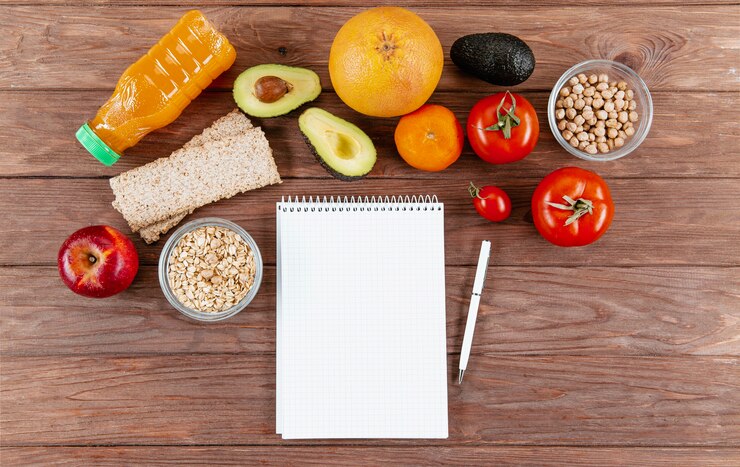Month Baby Food Diet Chart

Raising a baby is all about love and caring, but let me confirm one thing that there is no replace for nutrition when you are raising your champ. Baby Food can seem intimidating and expensive for those just getting started on this new leg of their journey as a parent. But it does not have to be. Here is a simple guide on baby food diet month by month with the right balance of ingredients in a low cost and nutrient dense way.
How is a Month-by-Month Diet Chart useful for us?
A planned diet chart based on your baby’s developmental stages helps in delivering the appropriate nourishment to them at right times. Introducing foods in this order of progression facilitates better digestion and aids in early detection of any food allergies.
From birth to 4 months — only breast milk or formula

What to Feed:
BREAST MILK: The best food for newborns, it contains antibodies and key nutrients.
Formula: liquid or powdered, which is an adequate substitute if feeding with breast milk is not possible.
Review:
Breastfeed it’s the most cost effective and healthiest option. But if you choose formula feeding, getting them in bulk and finding cheaper generic brands can make it easier on your wallet.
Months 4 to 6 — Starting Solid Foods
What to Feed:
Cereales de una Sola-Grano: Cereal con leche materna o formula.
Fruits Puree: Apples, bananas, pears
Puréed Veggies: sweet potatoes, carrots, peas
Review:
Do it with a simple, single-ingredient food so you can monitor for allergic reactions. Puréed homemade fruits and vegetables can be saved in the freezer, adding convenience as well as saving money prevent unneeded preservatives.
6 to 8 Months- The Palette Expands
What to Feed:
Mashed fruit (for example, avocados, peaches and nectarines).
Puréed— Butternut squash, green beans, zucchini
Pureed chicken, pureed turkey (not with broth or gravy), hard-cooked egg yolks, stage 1 and 2 meats or meat sticks without casing Breast milk Lentils
Review:
How is homemade baby food better and cheaper than store bought? Cooking in batches and freezing portions can really help to save time and money.
8-10 months – Introducing Texture
What to Feed:
Soft Fruits: Bananas, grapes (quartered) and berries.
Soft Cooked vegetables: Boiled and diced carrots, peas & potatoes
Finger Foods: Soft cheese, well-cooked pasta, soft breadxxxxxx.
Review:
Babies are ready to try new textures at this stage. This makes feeding time a bit more interactive and enjoyable for them. These can also be budget-friendly options using seasonal fruits and vegetables, and whole grains.
10-12 Months – Family Meals
What to Feed:
Family Meals: modified family meal plans but with zero added salt and sugar
Key takeaways: Avoid junk—instead, have nuts, seeds and fruits. And just say no to candy (ever)! Be disciplined on the calorie front. Focus on fibre for weight loss but ease up when you become fit.Healthy Snacks: Sliced fruit, veggie sticks or cheese cubes
Small amounts of cooked fish, chicken, tofu.
Review:
By now your baby shoulld be eating much of the same food that the rest of the family is eaten so meals are quick and affordable!. Emphasize meals that include all your food groups.
Cheap baby food advice
Make Your Own Baby Food: Making your own baby food is way less expensive than pre-packaged version. Small appliances to invest in include a blender and ice cube trays for freezing portions.
Try to buy in the Season : Fruits and Vegetables Are Generally Cheaper and Fresher.
Bulk Buying – where grains, lentils and other non-perishables can always be stored at home in bulk.
Invest in reusable food pouches for easy storage and on-the-go feeding.
Conclusion
Making a month-by-month baby food chart is not expensive. This is the stage where, with a little planning and creativity you can start feeding your baby really healthy meals all for a few dollars that will help support their growth and development.
Packs of Three Single Flavor Meats Ready to introduce your baby to taste? Get month by month diet chart for free & Nutrition experts advice Happy feeding!
FAQs on Baby Food Nutrition

1. Question: When do I introduce baby to solid food?
The general advice from most pediatricians is to start solids anywhere around 4 to 6 months of age. So of course, you should also be on the lookout for signs that your baby is ready (ability to sit up with support, interested in food).
2. How Can I Tell if My Baby Has a Food Allergy?
His suggestion is to introduce one new food at a time, with three days between them before introducing another one. That way you can look out for things like rashes, swelling or an allergic reaction which more often than not would present as diarrhea or vomiting.
3. How Do I Know My Baby Is Full — Big Exhausted Sleepy Sung Starfish Eyes Vintage Musers And Posters By Retromash | Wallpapers For Nursery Themes
When babies are full, they will sometimes take his head away from your boob, close their mouth or get squirmy. If you check in with these signals, overfeeding can be minimized.
4. Canned fruit and veggies for baby food
Although fresh fruits and vegetables are best, canned fruit and excess salt and sugar can still be a cheap way to get in some nutrients when things are out of season.
5. How can I help my baby get enough iron?
Low Iron for a Growing Baby Vegetables are also important, but it is paramount that you include iron-rich foods like pureed meats, fortified cereals and lentils. And make sure to pair them with a good source of vitamin C—this helps enhance iron absorption.
How To Store and Meal Prep
Nutrient retention and safety are important considerations in baby food storage and preparation. Here are some practical tips:
You can store fresh homemade baby food in airtight containers for maximum 48 hours. Freeze for longer durations of time, closely packed.
Iced Baby Food: Freeze baby food in the smaller segments of ice cube trays or silicone molds. So it is easy to only remove what you are going to use for a meal and limits waste.
Label and Date – Always label and date any food you put in the freezer. This way you know what to use first and you are not feeding your baby something that is past its best.
If you are going to slow thaw, the best way to do it is overnight in the fridge or by using a warm water bath Never leave food out in the open as it can propel bacteria.
The series thrive on variety and balance: As we meal prep do try to ensure that the baby receives a bit of different kinds of fruits,vegetables proteins and grains so your kids diet is balanced. Varying flavors and textures can also help avoid picky eating tendencies as they age.
This will allow you to prepare nutritious, budget-friendly baby food in a stress-free manner and provide the best nutrition for your child depending on their age.








1 Comment
Pingback: Proven Tips Best ways to deal with morning sickness for Expecting Moms - New Modern Moms